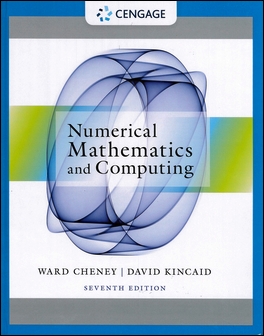書籍分類

Numerical Mathematics and Computing 7/e (H)
作者:Ward Cheney, David Kincaid
原價:NT$ 1,700
ISBN:9781133103714
版次:7
年份:2013
出版商:Cengage Learning
頁數/規格:704頁/精裝雙色
版次:7
年份:2013
出版商:Cengage Learning
頁數/規格:704頁/精裝雙色
內容介紹 本書特色 目錄 作者介紹
- Overview
Authors Ward Cheney and David Kincaid show students of science and engineering the potential computers have for solving numerical problems and give them ample opportunities to hone their skills in programming and problem solving. NUMERICAL MATHEMATICS AND COMPUTING, 7th Edition also helps students learn about errors that inevitably accompany scientific computations and arms them with methods for detecting, predicting, and controlling these errors.
分類位置:
理工 > 數學/微積分 > 數值分析


